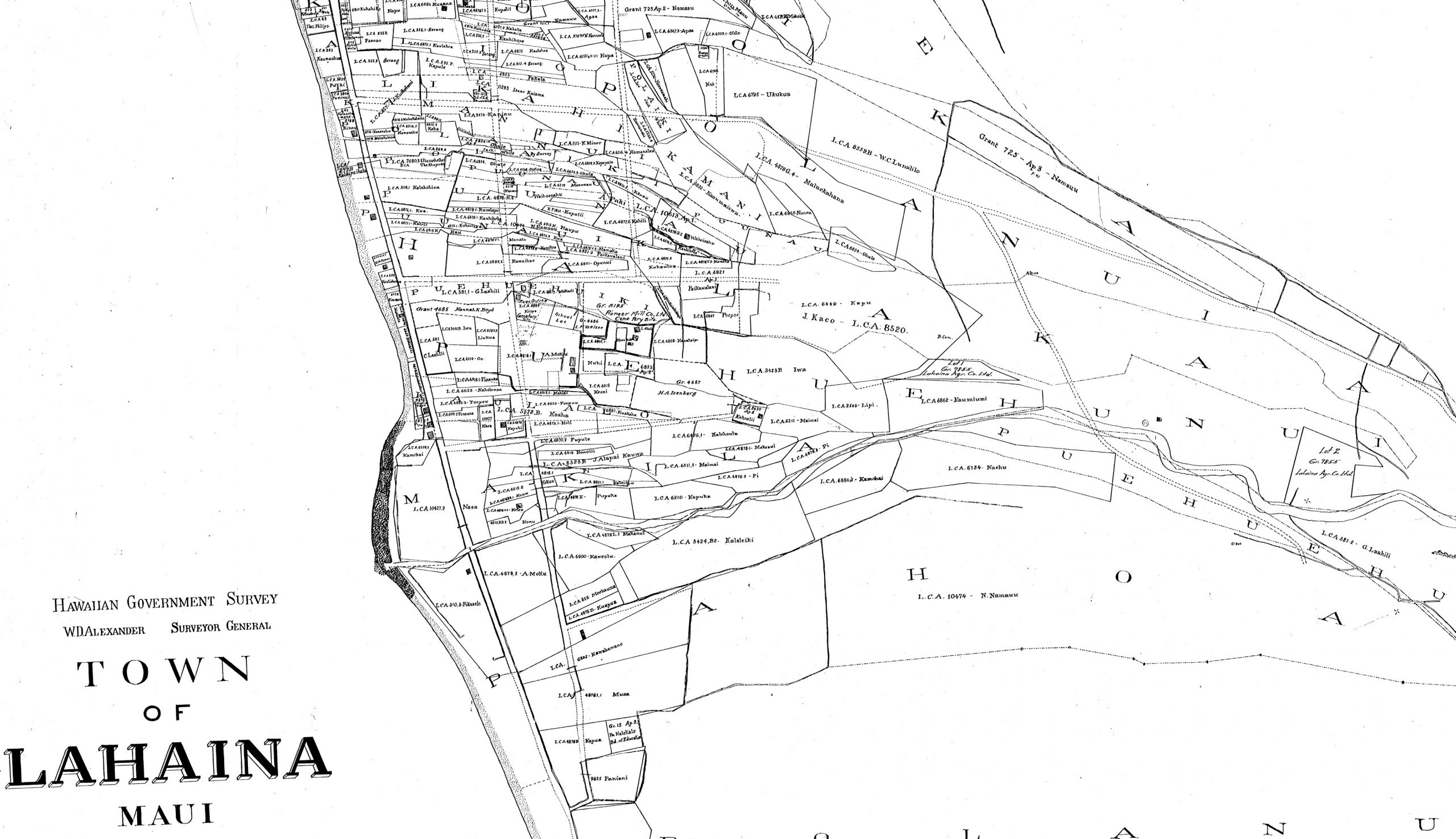
No Lāhainā
For Native Hawaiians, there are many ways to define aloha ʻāina and it can take a lifetime to fully understand this practice and way of life. If we want to better understand aloha ʻāina, it might serve us best to listen to the voices of our ancestors. How do we better understand how to care for one another and all that is around us?
Perhaps we can start at the beginning: by learning how a kupa lovingly describes his homeland. This article, written by “C&K” in 1867, is a powerful reminder of how aloha ʻāina was truly embedded in every aspect of life. Notice how the author describes his homeland. It is not a dry recitation of the locations of various places in Lāhainā. But rather, it carefully weaves moʻolelo and mele with the names of places, people, rain, flowers, bodies of water, and plants. It is a powerful reminder that Lāhainā was once an “abundantly fertile land.” A far cry from the dry arid land we see today.
If you want to learn the pule and oli to help support Maui, please visit this link.

About Lāhainā
To my fellow readers of the newspaper Ke Au Okoa, I hope that you will not be breathless from hurrying to read the story of life in Lāhainā in the past, as well in this current time. This is Lāhainā on Maui of Kamalālāwalu, a land greatly loved by the Chiefs in ancient times up until the present. Lele is the old name, because of the nature of the rule of chiefs in that time. Lāhainā is an abundantly fertile land for the things that were raised in that time and which still exist at this time, those things that Lāhainā’s children remember when they go to other islands or foreign lands: the Paʻūpili rain, the Lehua flowers of Līhau, the harbor for the ships, and the water of Kapoulu, these would be quite familiar to Lāhainā’s sons or daughters. Lāhainā is a good land for resting, for people weak in the body. It is a land that is pleasing to the eyes when gazing upon the breadfruit and candlenut groves. Your visitor’s body will be comfortable when you go on your afternoon stroll. When you return, take off your outer layer of clothing and move down under the cool candlenut tree swaying in the breeze where you will prop up your pillow under your head and turn your face up. Then you will soon feel the pleasant breeze of my land, the Maʻaʻa. You will soon know, visitor, that the wind of my beloved land is like water. That is why we love it, and that is why we frequently repeat these lines of song we have,
For the companion of the calm is the love,
For the breadfruit shade of Lele.
[…]
Citation: C & K. 1867 May 3. “No Lahaina.” Ke Au Okoa, Volume III, Number 5, Page 3. Retrieved from Papakilo Database http://papakilodatabase.com. Translated by Kapomaikaʻi Stone, Iasona Ellinwood and M. Puakea Nogelmeier. Institute of Hawaiian Language Research and Translation, 2013. Honolulu, HI: University of Hawaiʻi.
